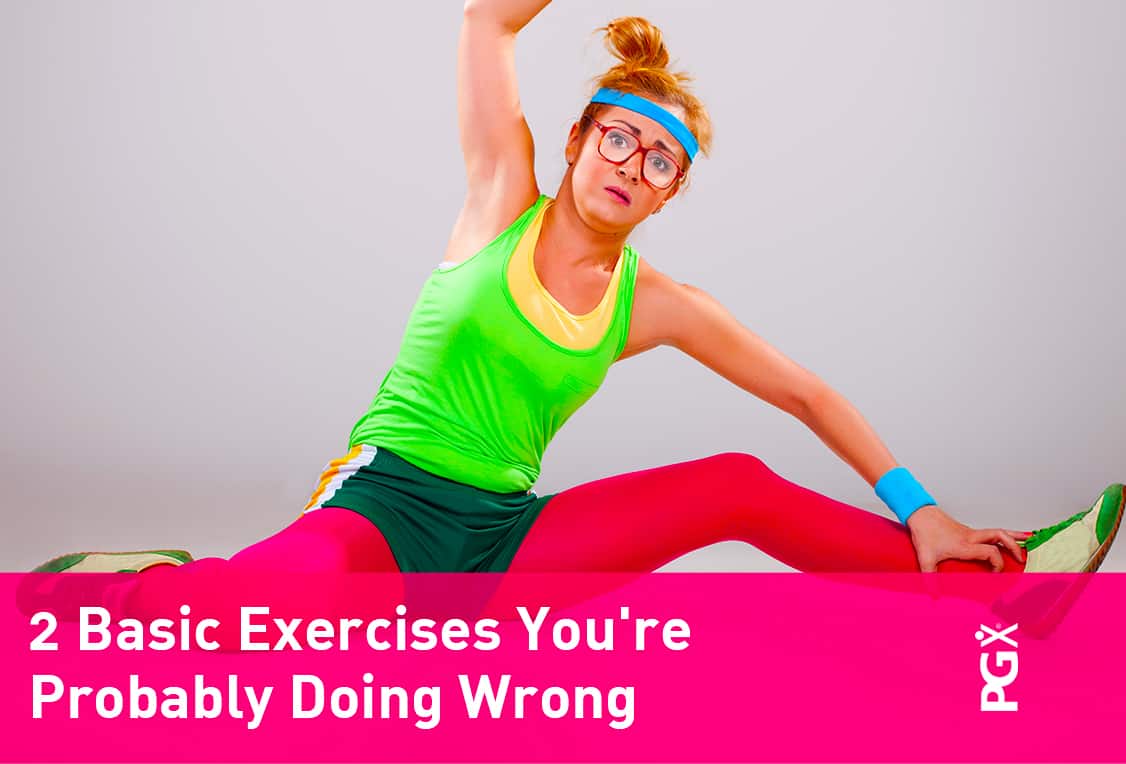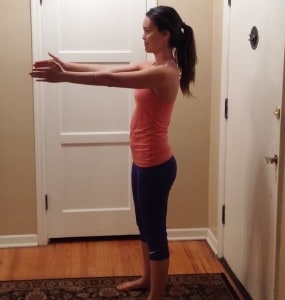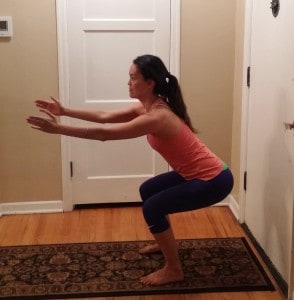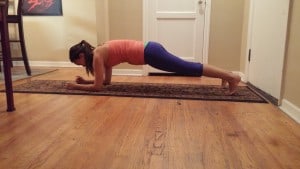2 Basic Exercises You’re Probably Doing Wrong
Moving your body and staying active is helpful to maintaining your health. Whether you enjoy leisurely walks around your neighborhood, swimming, hiking, taking aerobic classes or lifting weights, the opportunities are endless to keep your body moving.
As we age, we begin to lose muscle, known as “sarcopenia”. Around 30 years and older, our bodies start losing muscle mass at 3-5% per decade (sedentary lifestyle) [1]. Exercise becomes critically important to help muscle gain, as it stimulates the release of hormones that help with healthy muscle growth [2]. So, on that note – keep that body moving!
Ensuring that the movements you decide to do are done in the right form is crucial to getting the most out of your workouts. Here are two basic exercises you may have been doing wrong, and how to execute them correctly:
1. The Squat
The basic squat is one of the most effective movements for sculpting your legs as they mainly target your glutes, hamstrings, and quadriceps. Did you know that your glutes are one of the biggest muscle groups in your body?
If squatting does not feel natural to you, try holding onto something to stabilize yourself in the beginning to get your body used to the movement.
To execute a squat in good form, start with your legs slightly wider than shoulder width apart. Your toes can be pointed forward or slightly out.
When you crouch into your squat, lean back like you are sitting into a chair. Do not let your knees move forward over your toes or come together (knock knees). Your chest should be up, and your core should be firm. When you stand up, push up with your heels and squeeze your glutes.
Do 3 sets of 10 squats, and if possible, watch yourself in a mirror to make sure you’re really sitting back and getting the most out of the squat.
2. The Plank
Planks are a full body workout. It’s better to hold a plank for 20 seconds with proper form than for 1 minute with lousy form! Bad form has been known to cause muscle imbalances and injury.
A great plank is all about alignment and full body effort. Every muscle should be engaged, from your upper traps all the way down to your calves. When you are in position, you want to make sure your elbows are right under your shoulders; try to push away from the ground with your forearms. Your stomach should be tight (do not let your back sag) and think about how you would react if someone sucker punched you in the stomach (I’m serious!). That motion of slightly curling in will make this exercise dominate your abdominal muscles.
Start off with increments of 15 seconds at a time to ensure you have good form before going for a full one-minute hold.
There are always modifications to any exercise you do. If your body is not yet at the level of holding a 15 second plank with proper form, you can start off by planking on your knees instead of your feet. Continue to work on this until you feel you can start going for 15 seconds, then progress eventually to 1 minute. The determination and progress you’ll see will make you feel great!
References:
[1]. Cooper, Greg. “At What Age Do You Start to Lose Muscle?”LIVESTRONG.COM. LIVESTRONG.COM, 14 Sept. 2015. Web. 08 Oct. 2015. [2]. “Sarcopenia (Muscle Loss With Aging): Symptoms, Causes, and Treatments.” WebMD. WebMD, 3 Aug. 2014. Web. 08 Oct. 2015.




